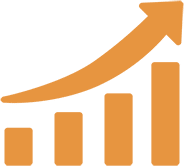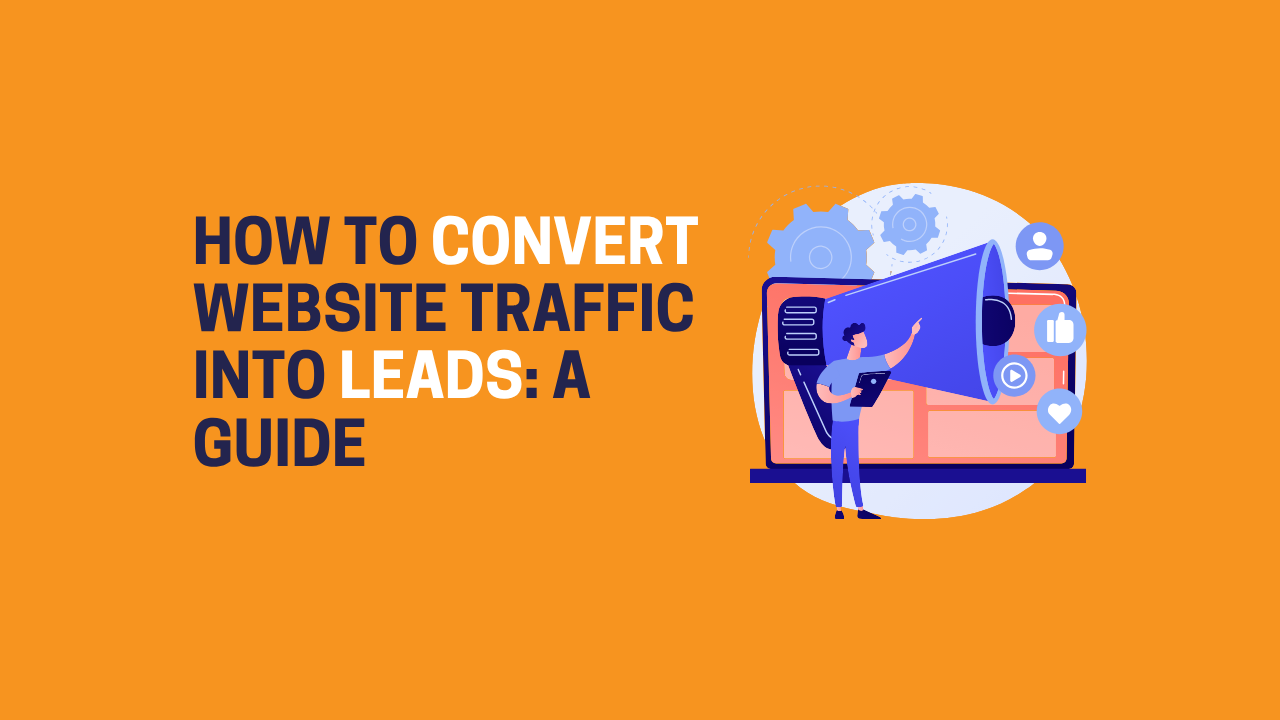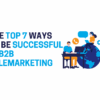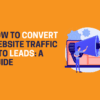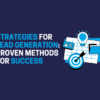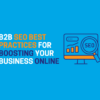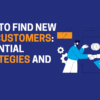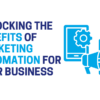How to Convert Website Traffic into Leads: A Guide
With more businesses turning to digital marketing and B2B buyers increasingly researching online before making purchasing decisions, converting website visitors into leads has never been more crucial. At The Lead Generation Company, we know B2B lead generation is vital for business growth, but many businesses struggle to bridge the gap between attracting traffic and converting that traffic into qualified prospects.
In this comprehensive guide, we’ll show you how to transform your website into a lead conversion engine using proven strategies, content techniques, and data-driven optimisation.
1. Understanding the Difference Between Website Traffic and Leads
Getting visitors to your website is only half the battle. Turning them into potential customers is the real test. Converting visitors into leads requires an intentional strategy incorporating engaging content, clear calls to action and data analytics in order to ensure visitors align themselves with your offerings and goals as much as possible. At TLGC, our B2B lead generation services focus on generating high-quality traffic that delivers ROI.
The Importance of Quality Over Quantity
When it comes to website traffic to leads, more is not always better. A flood of irrelevant visitors won’t do your business any good if none convert into leads. Quality traffic (visitors that align with your target audience) is what really counts, so your success shouldn’t just be measured by clicks alone.
What Counts As A Lead in B2B?
B2B lead generation differs from its B2C counterpart in that it requires greater strategic forethought. A lead can be defined as anyone who takes action such as downloading whitepapers or newsletters from your site, subscribing to your newsletter, filling out contact forms or signing contracts in order to demonstrate intent towards engaging with your brand further.
How Traffic Sources Impact Conversion Likelihood
Not all traffic sources have equal value. Organic search, pay-per-click ads, social media referrals and email campaigns all bring distinct visitors to your website with differing audience behaviours and conversion potentials. By evaluating how these traffic sources perform you can gain valuable insights into which ones drive conversions the most. Helping you allocate resources more strategically towards those which deliver the highest return on investment and optimise strategy by making use of diverse platforms effectively. Understanding this difference between traffic sources is important in terms of optimising strategy development across various platforms while maximising impact too.
2. Essential Steps to Start Converting Website Traffic
To be successful at converting website traffic into leads, it’s important that the right tools and strategies are in place. This includes having clear calls-to-action, user-friendly forms, and engaging landing pages designed to capture visitor data effectively. These elements together ensure you can turn traffic into valuable leads that contribute towards your business growth.
Lead Magnets, Gated Content, and Strong CTAs
Free resources (like eBooks, guides, checklists) serve as powerful incentives to persuade visitors to enter their details voluntarily and submit them. Pair this strategy with effective calls-to-action (CTAs) which are clear, compelling and strategically placed. This combination makes for successful lead generation strategies.
Form Optimisation and Landing Page Best Practices
Forms should be designed with user experience in mind. Keeping them simple, mobile-friendly forms with only important questions asked to reduce friction. Optimise landing pages for B2B, on the other hand, should focus on driving visitors toward action without distracting or deviating from this path. Minimising distractions while tailoring these pages specifically to specific audiences.
3. Proven Strategies for Turning Visitors into Leads
Sometimes converting website traffic involves using interactive and dynamic strategies. Such lead conversion strategies could include live chats, personalised recommendations, quizzes or content which actively engages visitors. By creating more immersive and tailored experiences, businesses can more successfully capture visitors’ attention, generate interest, and have them take the desired actions.
Live Chat, Retargeting, and Intent-Driven Popups
Implementing live chat enables you to engage with potential customers instantly, seizing leads at their most active moment of engagement. Retargeted ads help reengage visitors who didn’t convert during their initial visit by reinventing them back through ads retargeting based on specific user behaviours. Intent-driven popups serve as a strategic way of encouraging indecisive visitors into taking action based on specific user actions taken within certain pages or apps. Creating interactive experiences which help facilitate an improved lead conversion rate that translate directly into tangible results for businesses like yourself.
Personalised Messaging and Lead Scoring
Generic communication often fails to make an impact, while crafting customised messages tailored specifically for each visitor can create more engaging interactions and strengthen connections that increase the likelihood of conversion. Lead scoring allows you to identify high-value prospects by assigning scores according to engagement or conversion potential. This allows you to allocate efforts towards those most likely to convert and generate better business results overall. Combining personalised messaging and lead scoring ensures your strategies are not just efficient but also successful at driving positive change within your company.
4. How Content Marketing Drives Lead Conversion
Without quality content, lead generation efforts lack structure and substance, much like an empty house without walls. Strong writing forms the cornerstone for engaging your target audience’s interest while nurturing it to convert into valuable leads. Strong content forms trust between businesses and their audiences by building meaningful relationships and driving repeat engagement opportunities that improve lead conversion rates over time.
Creating Targeted, High-Value Content At Every Stage Of The Funnel
Generating targeted, high-value content at each stage of your funnel is very important for driving engagement and conversion. Attract visitors with engaging blogs or social media posts that address their interests while building awareness. Use case studies, whitepapers and guides as tools to nurture prospects toward a decision. By aligning your content with each stage of the buyer’s journey you create an efficient journey that educates, informs and creates trust while simultaneously creating a powerful content marketing for lead generation conversions.
Aligning Blogs, Case Studies, and Whitepapers with Buyer Intent
Your content strategy must focus on solving the problems of your audience. Blog posts that address questions and needs can draw potential buyers in at the awareness stage while case studies and whitepapers serve as proof of expertise that builds credibility and trust. All of these are important tools in nurturing deeper connections and moving potential customers along their buyer’s journeys. Providing value at each stage ensures meaningful engagement and improved results.
5. Using SEO to Attract and Convert the Right Audience
Search engine optimisation aims at drawing not just any visitors to your website, but the ideal ones. By targeting relevant keywords and optimising content according to user intent, SEO ensures that any traffic coming through will more likely engage and convert. Aligning content with needs of your target demographic is just one of the many B2B SEO tips that will help you to convert your website traffic into leads.
Targeting Long-Tail Keywords with Commercial Intent
Focus your SEO strategy on long-tail keywords that demonstrate strong intent to convert. Such search queries typically indicate further along in their decision-making process, for instance when someone searches for “best B2B CRM software.” When optimised your content targets for these specific and high intent phrases, attracting highly qualified audiences that are already inclined to take action is ensured. Not only will this increase conversions but it’ll ensure the prospects who genuinely have interest in what you’re offering.
Structuring Content For High Dwell Time And Engagement
Search engines reward websites that keep their users engaged, so to increase dwell time, create content that is easy to read and visually appealing. Use subheadings for easier reading. Bulleted lists can present information concisely. Add multimedia elements like images or videos to enhance the user experience. These all work amazingly together to increase dwell time which shows search engines your site offers value because visitors stay longer. It also improves your rankings while giving your target audience a great experience, making this approach a win-win for SEO as well as user satisfaction.
6. User Experience Optimisation for Lead Capture
With high traffic comes increased risk of losing potential leads through subpar user experience (UX). To keep potential conversions moving in the right direction, ensure an intuitive design with seamless transitions leading visitors to conversions. Prioritise fast loading times, mobile responsiveness and clear navigation to reduce frustration and maximise lead capture effectively. A properly designed UX can significantly enhance engagement levels and website performance overall.
Mobile Responsiveness, Site Speed, and Clear Navigation
For an optimal user experience on any website, mobile-friendliness, fast loading speeds and intuitive navigation should take centre stage. A responsive design ensures visitors can access it across devices seamlessly. Any delays due to slow performance or complicated navigation can lead users away completely and diminish potential lead conversions, negatively affecting your growth. By increasing speed and streamlining usability across platforms you encourage visitors to stay engaged, explore further, take desired actions quickly, helping your site convert visitors into leads effectively. Run your site through Google PageSpeed Insights to fix speed issues. Ensure menus are simple and mobile-optimised.
How UX Tweaks Reduce Bounce Rate and Increase Form Submissions
Making simple yet significant modifications to your website can dramatically decrease the bounce rates and improve lead capture. Clear and compelling calls-to-action (CTAs) lead users towards taking desired steps, with conveniently placed forms ensuring convenience and usability. Intuitive menus help visitors easily locate information without frustration for an enjoyable browsing experience. Adjustments such as these not only increase user satisfaction but also encourage form submissions, turning casual visitors into valuable leads. By paying attention to such details, your website’s user experiences can become ones which support conversions and maximise the effectiveness of your online presence.
7. The Role of A/B Testing in Fine-Tuning Conversion Tactics
Transforming your website into an effective lead-conversion tool requires taking an individualised approach. There’s no universal recipe for success, so testing is very important. A/B testing for lead forms helps identify what resonates with your target audience by testing elements like headlines, CTAs or layouts to maximise conversions and ensure a seamless user experience.
What To Test: Headlines, CTA Colours, Form Length, Layout
A/B testing is the magic sous to optimising the performance of any website. By testing different elements like headline wording, CTA placement or form length, you can gain amazing insights into user preferences and behaviours as well as conversion rate issues. These tests allow you to uncover which elements resonate most with visitors while uncovering any obstructions to conversions. Making data-driven decisions on these results can ensure your website continuously improves while increasing engagement and increasing form submissions over time. Small tweaks inspired by A/B results could even result in significant increases in conversion rates or overall website effectiveness.
Tools And Metrics To Track Success
Utilise tools such as Hotjar and Optimizely to efficiently run A/B tests, user experience insights and behavioural analytics. Focus on key metrics like click-through rates, average session duration and form completion rates to understand which changes have driven improvements. This data allows you to fine-tune your website based on actual user behaviour instead of guesswork. By continually testing and tracking these metrics you can identify what resonates with your audience so you can make informed decisions to enhance both its overall performance and user experience.
8. Case Study: Turning Website Visitors into Leads for a B2B Client
This case study shows how effective strategies can help turn website traffic into tangible leads for B2B companies.
A Real-Life Example From The Lead Generation Company’s Client Work
One of our B2B clients was launching a new SaaS product. They were looking for help with generating leads and sales quickly and to build a sustainable pipeline. To meet this challenge, we implemented effective telephone outreaches and a phenomenal LinkedIn campaign. These achievements demonstrate the power of merging data-driven insights with targeted optimisations, driving significant results and expanding lead generation efforts exponentially. They valued our expertise in these areas and we provide substantial ROI on their bottom line. We were honoured to be part of this early stage start-up journey.
Key Results and Takeaways
Adopting a data-driven, customer-first approach is important for turning website traffic into leads that convert. Focusing on the user experience, testing strategies, personalising content and improving engagement are proven ways to do just that. By regularly assessing results and refining tactics businesses can create sustainable systems that turn casual visitors into dedicated customers over time. Consistently adapting tactics will lead to long-term success in lead generation efforts.
Conclusion
Turning website traffic into qualified leads isn’t just about having the right tools, it’s about using the right approach tailored to your audience and business goals. At The Lead Generation Company, we understand that in the B2B space, high-value leads come from genuine conversations, not just clicks and impressions.
That’s why we combine smart digital strategies with our proven telemarketing lead generation services to deliver real, measurable results. While your website nurtures and informs, our expert team proactively engages prospects over the phone—qualifying interest, building relationships, and driving your sales pipeline forward.
Our personalised, consultative approach means we don’t just chase numbers—we generate high-quality B2B leads that are ready to convert.
So if you’re getting traffic but not leads, or leads that never go anywhere—let’s change that.
👉 Book a free consultation today and discover how our telemarketing and lead generation experts can turn your website into a lead-converting machine.

Rachel Smith is a Digital Marketing Executive at The Lead Generation Company, taking ownership of our entire digital marketing strategy, focusing on driving lead generation, increasing brand awareness, and supporting client acquisition.

